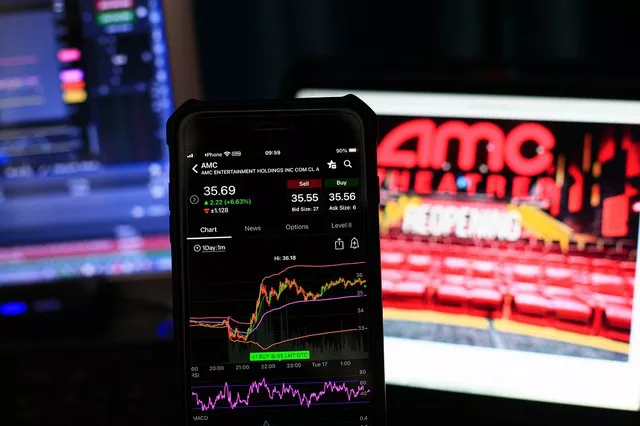In the intricate realm of financial markets, the term “Dow Jones Futures” holds significant weight. These futures contracts, tied to the iconic Dow Jones Industrial Average (DJIA), play a pivotal role in shaping investment strategies and gauging market sentiment.
1. Unveiling Dow Jones Futures
Dow Jones Futures, often referred to as DJIA Futures, are standardized agreements that allow investors to speculate on the future performance of the Dow Jones Industrial Average. The DJIA, a well-known stock market index, represents the value of 30 major American companies across diverse industries. Dow Jones Futures provide a means for market participants to bet on the direction of the DJIA’s future movements, offering both potential rewards and risks.
2. Understanding the Mechanism
At the core of comprehending Dow Jones Futures lies a grasp of how they function. These futures contracts are essentially commitments to buy or sell the DJIA at a predetermined price on a specified date in the future. This mechanism facilitates speculation on whether the index will rise or fall, presenting opportunities for investors to capitalize on market movements without directly owning the underlying assets.
The calculation of Dow Jones Futures involves intricate mathematics, integrating various factors such as the current DJIA value, interest rates, and the time remaining until contract expiration. Additionally, adjustments for dividends and corporate actions on the constituent stocks contribute to the intricate process of pricing these futures contracts accurately.
3. Factors Influencing Dow Jones Futures
Numerous dynamic elements influence the fluctuations of Dow Jones Futures, rendering them a vital barometer of market sentiment and economic conditions. Key factors include:
a. Macroeconomic Indicators: Metrics like Gross Domestic Product (GDP), employment figures, and consumer confidence play a substantial role in shaping market trends, subsequently affecting Dow Jones Futures.
b. Corporate Earnings Reports: The earnings performance of the 30 companies comprising the DJIA significantly impacts the index and, consequently, its futures contracts.
c. Geopolitical Events: Global events, ranging from trade tensions to geopolitical crises, can create volatility in the financial markets, directly influencing Dow Jones Futures.
d. Monetary Policy and Interest Rates: Decisions made by central banks regarding interest rates can sway investor preferences between equities and other investment vehicles, consequently affecting Dow Jones Futures.
4. Arbitrage and Dow Jones Futures
Efficient market dynamics are integral to the pricing of Dow Jones Futures, with arbitrage acting as a balancing force. Arbitrageurs, astute participants in financial markets, exploit price disparities between various instruments or markets to secure risk-free gains. In the context of Dow Jones Futures, arbitrageurs work to align the prices of these futures contracts with the calculated fair value of the DJIA.
When Dow Jones Futures are priced above their fair value, arbitrageurs can simultaneously sell the futures contract while purchasing the constituent stocks, driving the futures price downward. Conversely, when the futures contract is underpriced, arbitrageurs buy the contract and sell the underlying stocks, leading to price correction.
5. Utilizing Dow Jones Futures: Hedging and Speculation
Market participants deploy Dow Jones Futures for two primary purposes: hedging and speculation. Hedging involves using these futures contracts to offset potential losses in the cash market. Investors holding a diversified portfolio of stocks can employ Dow Jones Futures to mitigate losses in the event of an adverse market movement. By taking short positions in futures contracts, they can counterbalance potential declines in their stock holdings.
Speculators, on the other hand, engage in Dow Jones Futures trading to capitalize on anticipated market movements for profit. By taking either long or short positions based on their predictions, speculators can potentially benefit from both upward and downward trends in the DJIA.
6. Risks and Risk Management
While Dow Jones Futures offer substantial opportunities, they are accompanied by inherent risks. The leverage inherent in futures contracts can amplify both gains and losses, necessitating a comprehensive understanding of risk management strategies.
Market volatility and sudden price fluctuations can lead to significant losses for Dow Jones Futures traders. Employing risk mitigation tools such as stop-loss orders and adopting prudent position sizing are vital elements of responsible Dow Jones Futures trading.
7. Dow Jones Futures and Market Impact
The trading of Dow Jones Futures has a ripple effect across the broader financial markets. As a globally tracked index, the performance of the DJIA influences investor sentiment and trends worldwide. Fluctuations in Dow Jones Futures prices can trigger consequential movements in other stock indices, currencies, and commodities.
Furthermore, Dow Jones Futures contribute to market liquidity and efficient price discovery mechanisms. They provide an avenue for investors to gain exposure to the DJIA without directly owning individual stocks, enhancing market accessibility and diversification.
Conclusion
Dow Jones Futures occupy a central role in modern finance, serving as essential tools for both hedging and speculation. A nuanced understanding of their mechanics and implications empowers investors and traders to make informed decisions. As a gauge of market sentiment and economic conditions, Dow Jones Futures exert considerable influence on global financial markets, reflecting changing dynamics and events.
Nonetheless, approaching Dow Jones Futures trading with prudence and a robust grasp of risk management strategies is imperative. As financial landscapes evolve, Dow Jones Futures will continue to guide investment decisions, driving portfolio strategies and risk mitigation practices. Armed with the knowledge of Dow Jones Futures, market participants can navigate the complex world of finance with confidence, positioning themselves to seize opportunities in an ever-evolving market environment.


